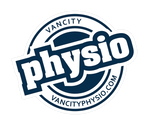In recent years, the cost of gym memberships has been steadily rising, and many of us have found ourselves rethinking where to exercise. Whether it’s due to personal preferences, a desire for more privacy, or simply the convenience of working out at home, building a home gym is a great alternative. But with inflation making everything from groceries to gas more expensive, the idea of creating a home gym might feel out of reach for many.
The good news? You don’t have to break the bank to set up a workout space that suits your needs. With some creativity, smart purchasing, and a bit of planning, you can create an effective home gym without draining your wallet. Here’s how:
1. Start with What You Have
Before diving into purchases, take stock of what you already own. Many people overlook the items around their home that can double as workout equipment. For example:
-
Water bottles or cans: These can act as light dumbbells for upper body exercises.
-
Stairs or sturdy chairs: These can be used for step-ups, tricep dips, or elevated push-ups.
-
Towels: These can help with core exercises or stretching.
-
Backpacks: Fill a backpack with books to create a makeshift weighted vest for squats, lunges, or even walking.
By getting creative with what you already own, you can avoid unnecessary purchases and still get a great workout.
2. Invest in Multi-Purpose Equipment
When you’re building a home gym on a budget, it’s essential to focus on versatility. Look for equipment that can serve multiple purposes or offer a full-body workout with a single piece. Some budget-friendly essentials that can serve various functions include:
-
Resistance Bands: These are one of the most affordable options for strength training. They’re great for full-body workouts, including legs, arms, and core. Plus, they take up almost no space and can easily be stored away when not in use.
-
Dumbbells or Kettlebells: Dumbbells can be used for a variety of exercises, from arm curls to weighted squats. If you buy adjustable dumbbells or a set of kettlebells, you can easily swap weights to target different muscle groups.
-
Jump Rope: A jump rope is an inexpensive way to improve cardiovascular health and coordination. It’s easy to store, and you can increase intensity by varying speed and jumping style.
-
Foam Roller: Not only does it aid in muscle recovery, but a foam roller can also be used for stability exercises and stretches, helping you improve flexibility and mobility.
By focusing on equipment that offers multiple benefits, you get the most out of every purchase.
3. Shop Second-Hand and Online Deals
If you’re looking to buy equipment, don’t forget the power of the second-hand market. Many people sell barely used gym gear at a fraction of the original price. Here are a few ways to score deals:
-
Facebook Marketplace: Many people sell gym equipment that they no longer use. You can often find everything from treadmills to dumbbells at reduced prices.
-
Craigslist: Similar to Facebook Marketplace, Craigslist can be a goldmine for affordable, pre-owned workout gear.
-
Thrift Stores and Yard Sales: Believe it or not, you can sometimes find great deals on exercise equipment in thrift stores or at yard sales. Keep your eyes peeled for things like kettlebells, yoga mats, or even larger equipment like stationary bikes.
-
Sales and Discounts: Watch for online sales, especially around holidays or Black Friday. Websites like Amazon, Walmart, or fitness retailers often offer discounts on home gym gear.
4. DIY Equipment: Get Creative
If you’re handy or willing to do a little work, there are many DIY projects that can transform everyday items into useful gym equipment. Here are some ideas:
-
Sandbag Weights: You can make your own sandbag weights using durable bags (like duffle bags) and sand or dirt. These are fantastic for weight training exercises like squats, lunges, and deadlifts.
-
Suspension Trainer: You can create your own suspension trainer using sturdy ropes and handles. This allows you to perform exercises similar to TRX training, targeting your core, arms, and legs.
-
Medicine Ball: Fill an old basketball with sand or rice and seal it shut to create a makeshift medicine ball for core exercises and full-body movements.
DIY projects can save you a significant amount of money and still provide great equipment for your home gym.
5. Maximize Space Efficiently
One of the advantages of a home gym is that you have the flexibility to work out anywhere in your house. However, creating a functional space doesn’t require a lot of square footage. Here are some tips for maximizing your available space:
-
Use Vertical Space: Install a wall-mounted rack to store resistance bands, jump ropes, or dumbbells. This keeps your equipment organized and prevents clutter.
-
Foldable Equipment: Look for equipment that can fold or be easily stored away. Yoga mats, balance boards, and adjustable dumbbells can be stashed in a closet when not in use.
-
Designate a Workout Corner: You don’t need an entire room dedicated to your gym. Simply designate a corner in your living room, bedroom, or basement as your workout area. A small section of space with a mat and basic equipment is all you really need to get started.
6. Focus on Bodyweight Exercises
The beauty of bodyweight exercises is that they require no equipment at all. Here are a few effective exercises you can do at home, no matter how small the space:
-
Push-ups (and their variations)
-
Planks
-
Squats and lunges
-
Burpees
-
Mountain climbers
By incorporating bodyweight exercises into your routine, you can build strength, flexibility, and cardiovascular endurance without spending a dime on equipment.
Building a home gym on a budget is absolutely possible with a little creativity, patience, and smart shopping. Focus on versatile equipment, look for second-hand deals, and don’t forget about bodyweight exercises that can be done with little to no gear. By being resourceful and intentional, you’ll have a home gym that’s effective and tailored to your needs—without the hefty price tag.
So, start small, get creative, and soon enough, you’ll be enjoying a workout routine that fits both your goals and your budget. At your next Physio appointment, ask for home exercises!


